Thousands of Territorians lie lost in unmarked graves
THE child-sized casket of Jasmine Willika’s little sister lies somewhere in the Barunga cemetery. Her family doesn’t know where she is — and they are not alone
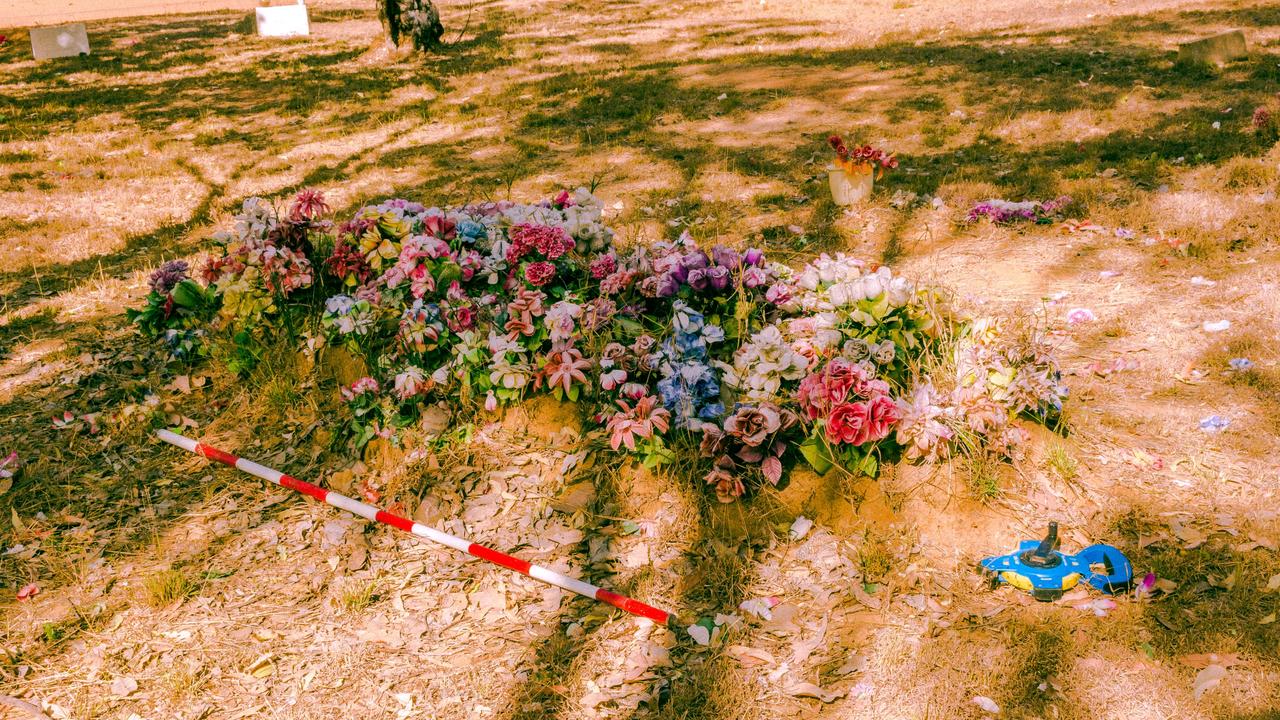
THE child-sized casket of Jasmine Willika’s little sister lies somewhere in the Barunga cemetery.
But Ms Willika and her family don’t know where she is — and they are not alone.
Her coffin, which was buried more than 30 years ago, is one of over 100 graves yet to be identified in the cemetery 80km south of Katherine.
She is one of what is likely to be thousands of Territorians lost beneath the surface of the earth in the NT’s remote communities.
Researchers estimate there could be 4800 or more Territorians lying in unmarked graves — which would be the equivalent of 2.22 per cent of the current population.
An unmarked grave is usually spoken of as an anomaly, a cause for suspicion or the result of a grisly discovery.
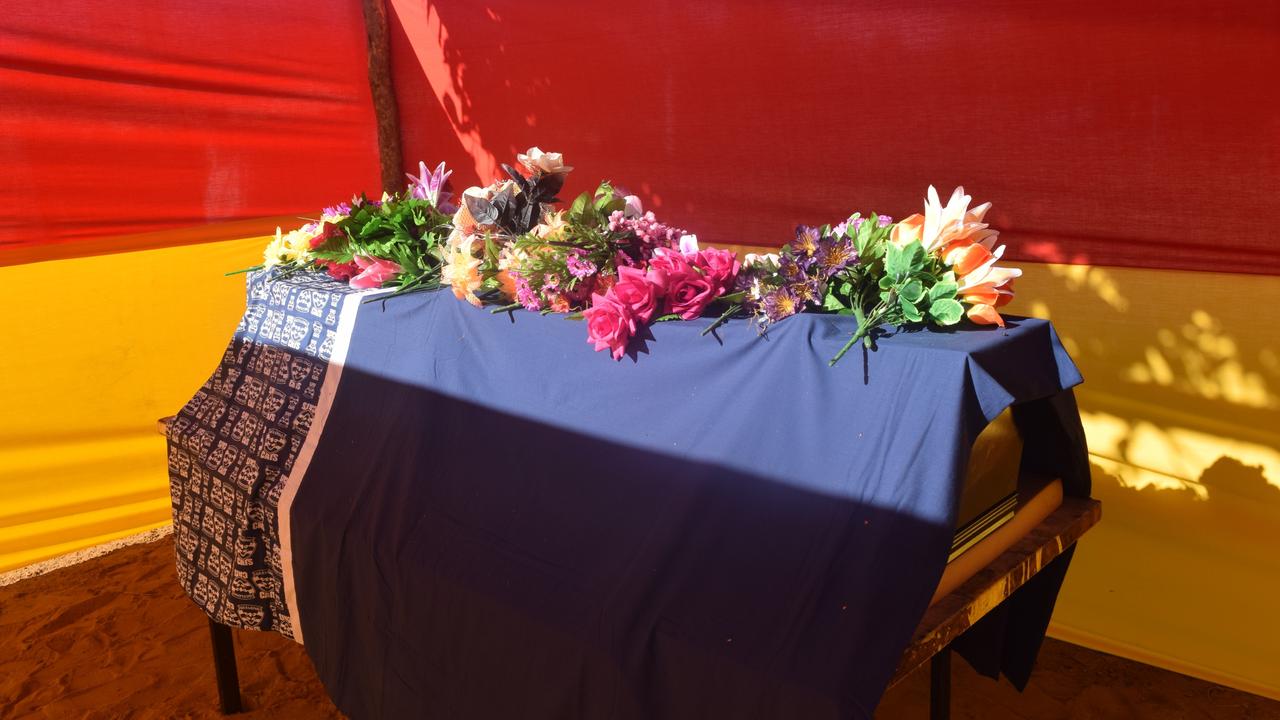
However, in a significant number of remote Aboriginal communities it has been the norm for decades or possibly longer.
It is a number that is only just starting to be investigated.
Since the 1960s, approximately 200 burials have taken place at the Barunga Cemetery but only 29 of the graves have been marked with a plaque identifying the name of the deceased.
Archaeology expert Professor Claire Smith said there had been no historical records kept of who had been buried where by any local authority.
“We did the first recording of graves in 2013 because the community was worried that people were dying and getting buried and there was no record of it,” she said.
“At the time we couldn’t believe it. We thought ‘there has to be a record somewhere’. We did the archival research, we looked everywhere, we spoke to people in Katherine.
“But no, people were being put in the ground but no one was recording that this grave belonged to this person.”
Professor Smith, alongside doctoral candidate Jordan Ralph, is leading an archaeological team of Flinders University researchers finding the lost loved ones in Barunga’s cemetery. Professor Smith said the absence of any burial records was both a sign of structural racism and geographical disadvantage.
“It’s not that it is intended, but the graves of white people throughout the Northern Territory are recorded,” she said.
“I die, my mother dies, my little baby dies, it’s in the ground and there is a record. Not just for me but a permanent record that this person is buried here.
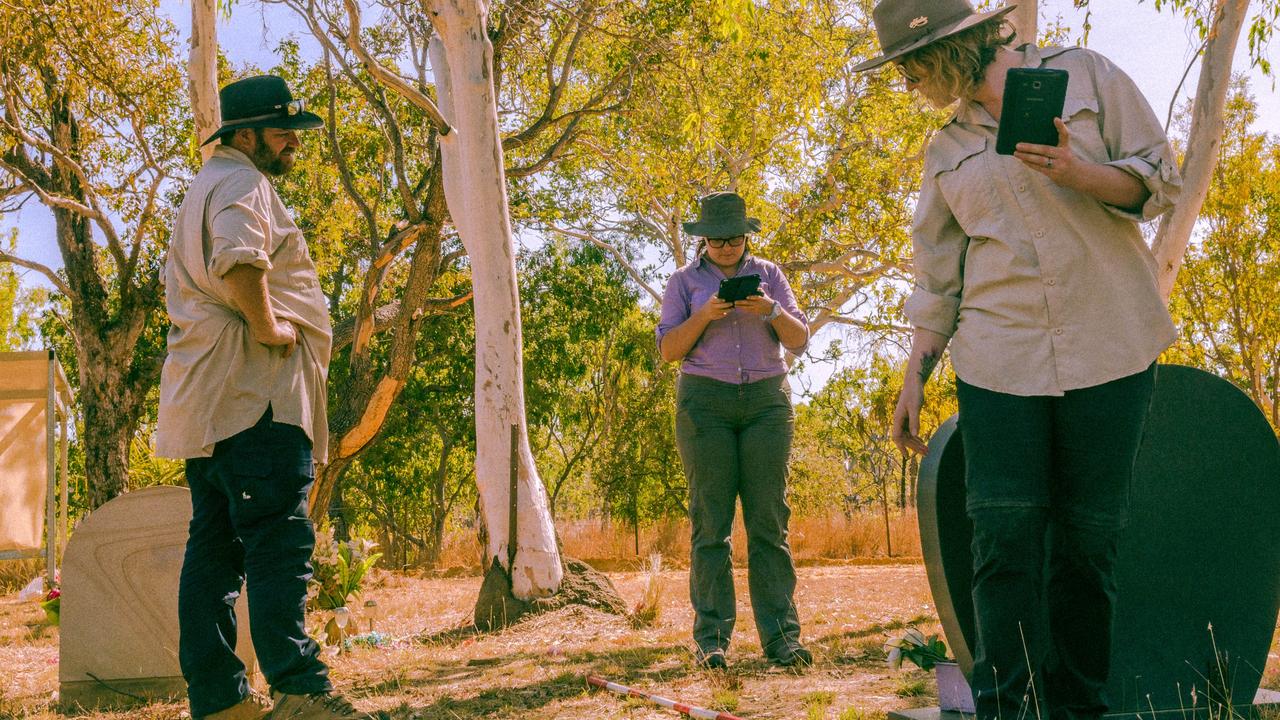
“One group gets looked after in a different way to another group and it’s based on geography. So cemeteries in remote communities, it was never legislated that they had to be recorded.
“There has been an oversight for 150 years of British colonisation of the Northern Territory in which Aboriginal graves were not recorded.”
Professor Smith said it was only now that new legislation was coming through, with the ongoing revision of the NT Cemeteries Act, that local and NT government were starting to realise the size and scope of the issue across the Northern Territory.
“Barunga has a population at the moment at around 350, in the past it has had around 250, so we think Barunga probably has 200 graves all up,” she said.
Professor Smith said the team had found similar circumstances in the graveyards of other communities they had worked in, including Werenbun, Manyallaluk, Beswick and Bulman.
“Beswick has around 600 people and three graveyards and people buried in backyards and all sorts of things,” she said.
“I think you average it at maybe, and it is a rough figure, around 100 per community.”
Professor Smith said there had also been multiple incidences of people being buried incorrectly.
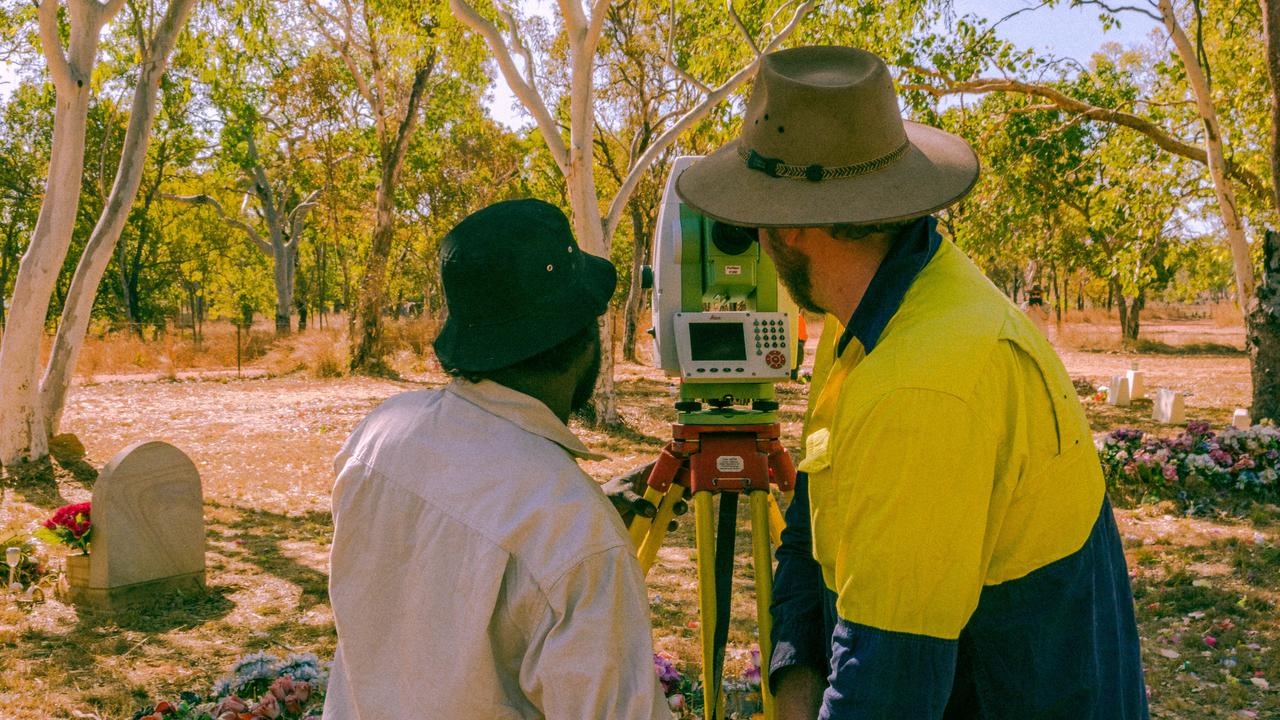
“Sometime the graves haven’t been buried deep enough. No one took control of it,” she said.
“Sometimes it floods and the box comes up and that’s really distressing. When Beswick flooded — they had that big flood in 1988 — there were boxes just coming out of the ground.
“That’s pretty scary. We don’t even know who they are.”
Ms Willika is now working with Professor Smith while studying archaeology at Flinders University — both for the benefit of her community and to help find her lost little sister.
“It is something that made me feel like I needed to keep our information safe so we can pass down to generations,” she said.
“It’s helping out my community and keeping the history recorded, our cultural history.”
Ms Willika said she had been working with the elders in identifying the unmarked graves.
“They (the elders) feel very happy that things are working out and we are getting headstones covered and everything on some graves so families are getting identified for where they are buried,” she said.
When the surviving local knowledge has been exhausted, the team of archaeologists work with what archival records they can find as well as modern surveying equipment.

Researcher Antoinette Hennessy said the team often relies on a Ground Penetrating Radar (GPR) to find disturbances or depressions that indicate where someone is buried.
“It can tell us there is something there without actually getting into the ground and uncovering something,” she said.
“So there is as little disturbance as possible out of respect for the community and out of respect for the person buried.
“At the moment, we are just identifying clear mounds or clear depressions that we are likely to say ‘there is someone buried here’ and ‘do we know who?’”
Her colleague Endi Ukota, who is doing his masters in archaeology, said they had only started to scratch the surface of the issue.
“It is a huge problem, it’s huge,” he said.
“It is really important because you can see the pain through the families just not knowing, especially when you are with the traditional owners. It is something that needs to change.”
Sharon Hillen is the acting chief executive of the Roper Golf Council, which has been servicing Barunga and the surrounding communities since 2008.
Ms Hillen said the huge historical oversight had been inherited from previous community government councils.
“There were no registers kept,” she said.
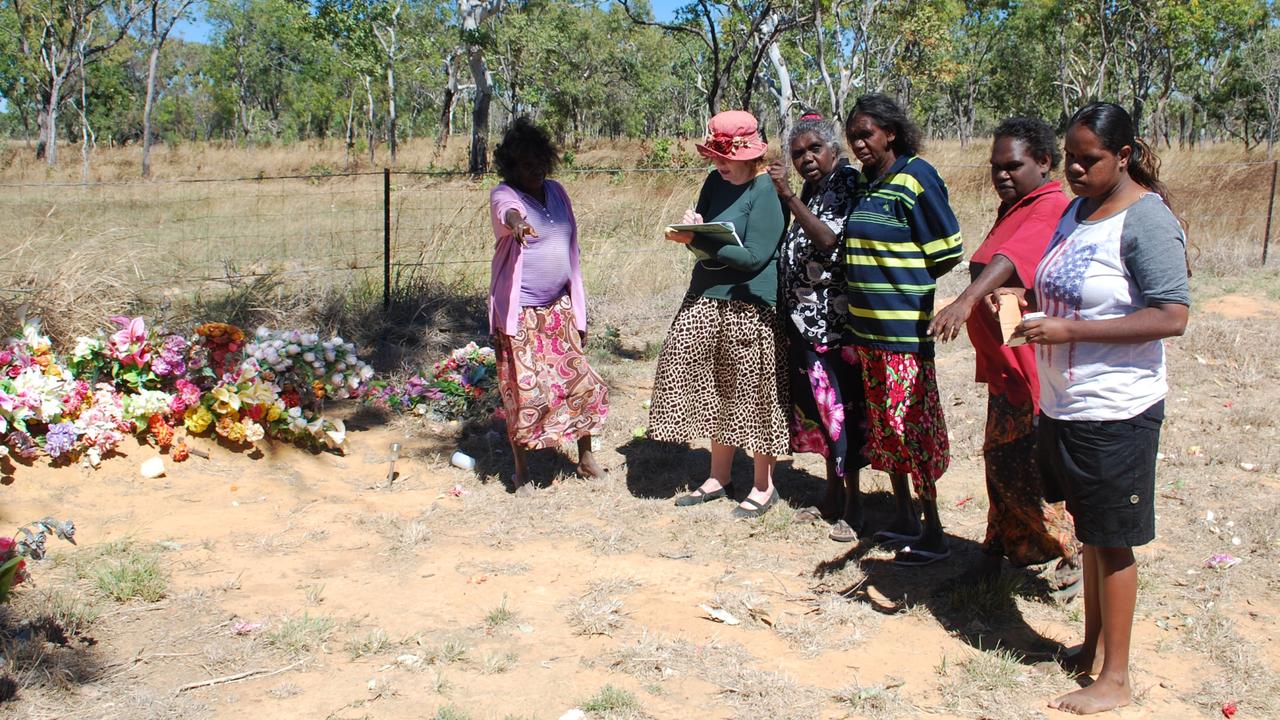
“We’ve only been able to recently introduce just standard administration around burials.”
Ms Hillen said the council had become a “silent partner” in the cemetery project in Barunga by allowing the researchers to have access to the site.
“Council is basically hoping that the data that we don’t have in our burial register can be forthcoming, so that we can actually formalise the information that is coming from that project,” she said.
“Any information or data that they come up with in the project will help us formulate a formal public register of burials.”
Ms Hillen said the significant number of unrecorded graves at Barunga was an indication of the huge amount of work left to be done in rolling out similar initiatives throughout all of the Roper Gulf region.
“It’s an indication of the mammoth task that we have in all of our communities,” she said.
“Our communities out there, nobody has kept the data.
“That’s why the culture of mounding and flower laying is there, when you go out to a remote cemetery, you’ll see that most of the graves are mounded quite high and they have flowers on them.
“Families keep those things happening year after year because there has been no system of marking where graves are.
“It’s something that we have to do and we are just so grateful that the university and the heritage organisations have taken an interest in this because they have given us a head start.”
Ms Hillen said the current review of the NT Cemeteries Act would hopefully remedy the situation moving forward.
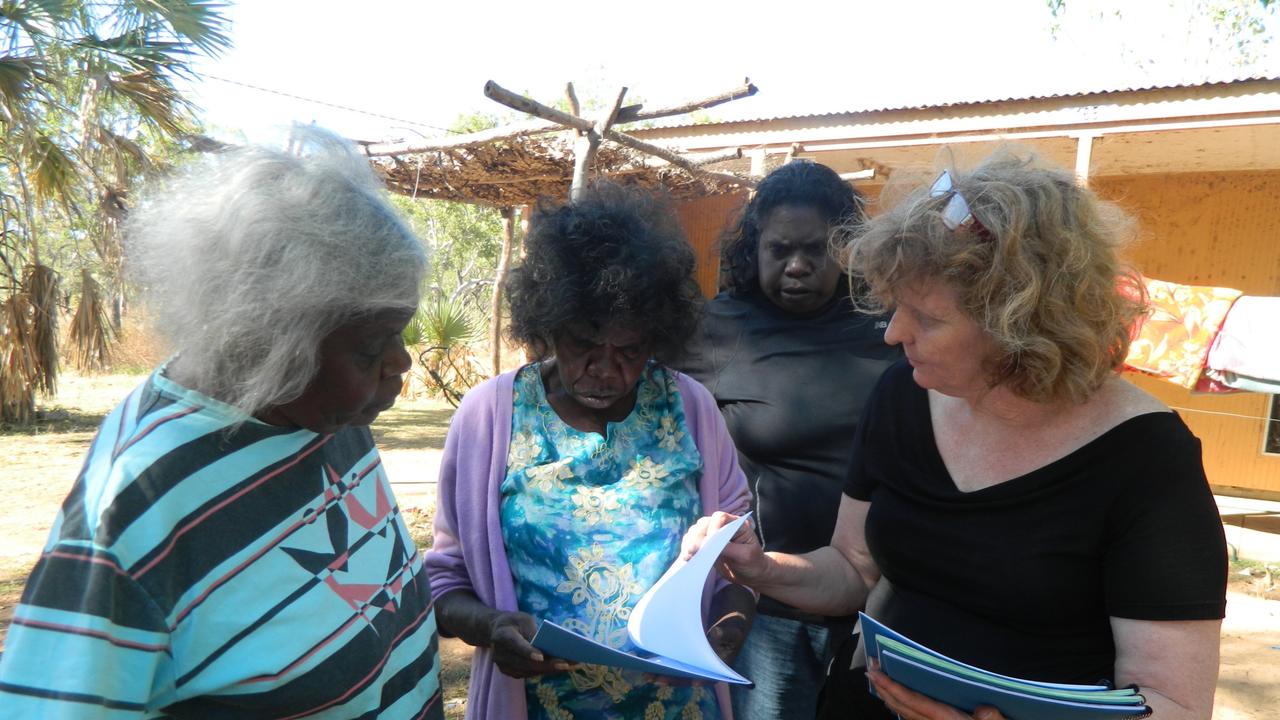
“We’re working with the NT Government and they are reviewing the Cemeteries Act, so there is going to be some really good structure around compliance and the requirements of council,” she said.
“There have been debates around who will manage cemeteries on land trust lands. Those debates have now been had and council has been involved in the conversation with government around the future development around cemeteries and burial practices.
No matter how long the revisions to the Cemeteries Act may take, there is one thing that remains front and centre on everyone’s mind — time is running out.
“Some of the old people they have not got much time left. We have to get the knowledge from people before, so that this doesn’t happen,” Ms Hillen said.
“This is why this work has got to be done soon.”
As for the research team in Barunga, Professor Smith said the continual management of this needed to come from the communities themselves.
“The thing that often happens is a lot of white people fly in, ask a lot of questions, haven’t been there long enough, don’t know who or how to ask anyone, ask the wrong questions and get the wrong information and then write it down. That information then becomes law and becomes accepted,” she said.
“We’ve worked with these communities for 30 years, since 1990. I first went out there in 1976 but I started doing research in 1990 with my husband Gary Jackson, and Jordan Ralph started research here in 2010.
“What we’re doing is working with community members to get that really solid information and to make communities independent. So at the end of our work with Barunga, there will be a recording system in place where this doesn’t ever happen again. The only way you get sustainability is when the community takes control.”
Professor Smith also noted all the work had been in a voluntary capacity.
INCREDIBLE OFFER: GET AMAZING SENNHEISER HEADPHONES WITH AN NT NEWS SUBSCRIPTION
“We’ve provided our own funding; we’ve got ourselves up here. We’ve done this graveyard as a way of working through the issues for a difficult and complex problem but also we’ve worked with the community so long that when people say, ‘can you record my grandmother’s grave’ then how could you say no?,” she said.
“We want to work with community people who know themselves, so at the end of it we’ve designed a tablet with a new form and it has got moieties, skin, clan and all the information for that person.
“What we want to do at the end of it is hand that over to the community and say okay, we’ve recorded everything up till now, your people are trained, and you can take that on.”
Doctoral candidate Mr Ralph said the team had not initially started their work in Barunga at the cemetery.
“We’ve come here to Barunga as archaeologists, originally to study and record things from the deep past — rock art, stone artefacts, and other archaeological material like that,” he said. “Instead, at the request of the community we have been directed toward assisting with present-day problems, using skills from our archaeological toolkit — site recording, site mapping, and marrying the physical remains we see with the memories of living people.
“For me personally, it’s about seeing the positive effects of our work. Not only is it about fixing a problem about past oversight in the present, but it’s about giving the community the ability to control their future, in terms of how they are memorialised and memorialise loved ones.”
■ PHOTOS published with permission from Traditional Owners and Custodians


